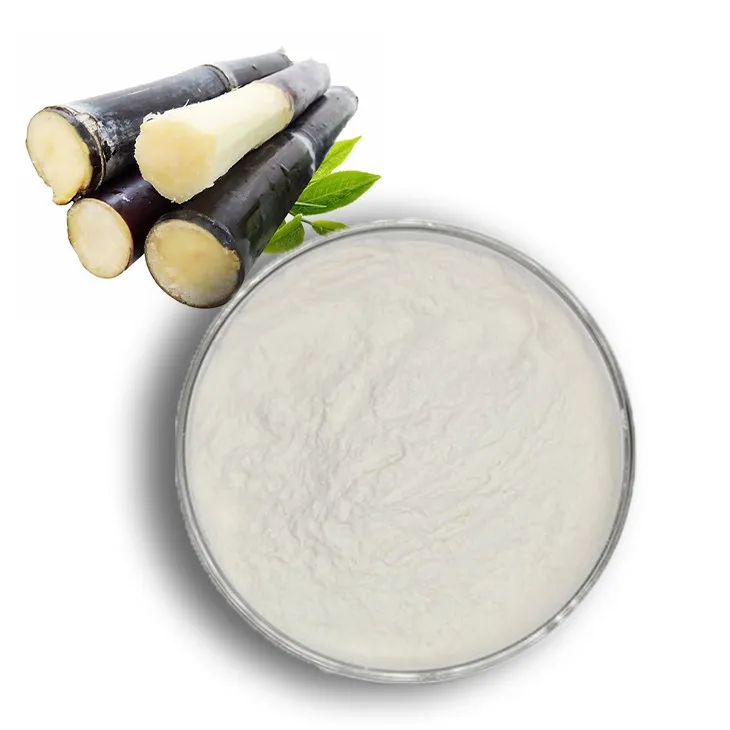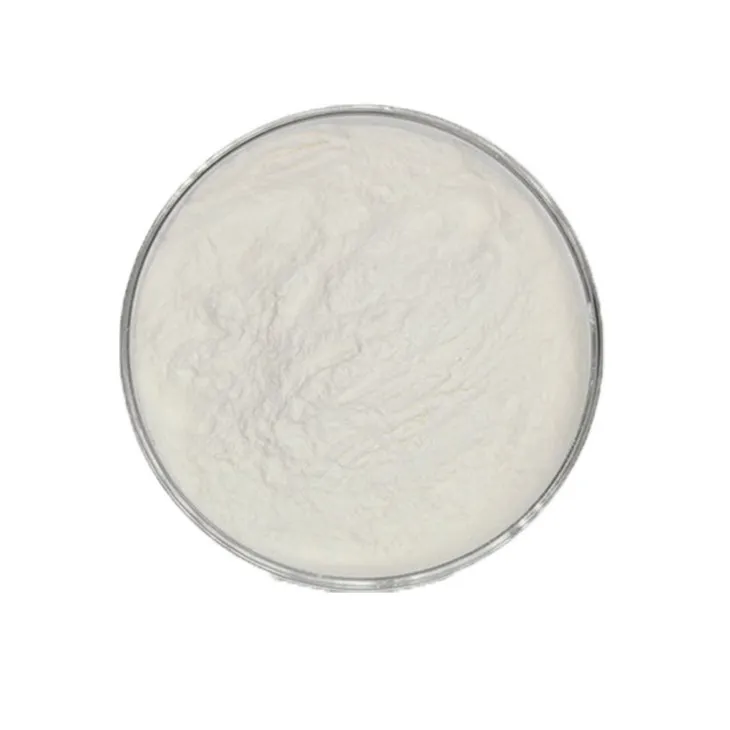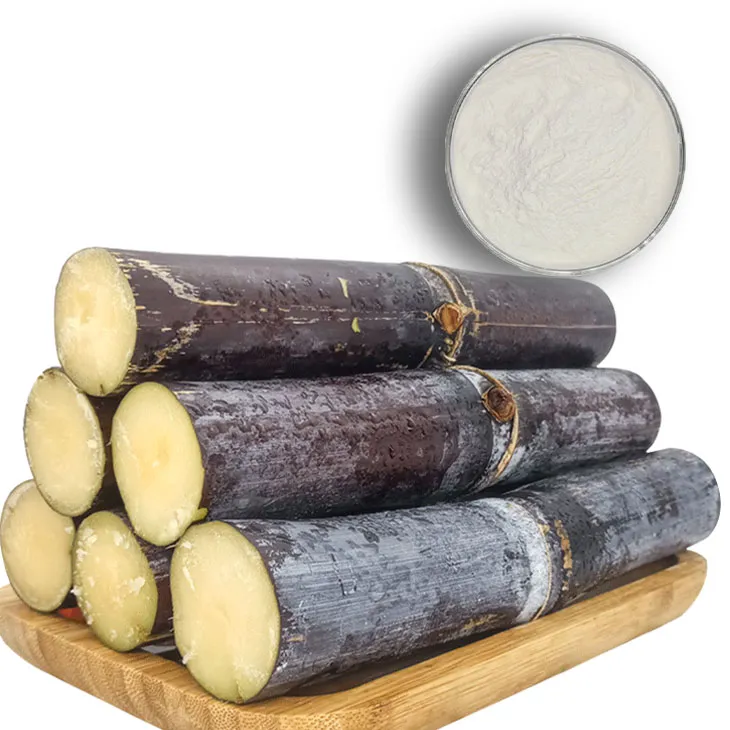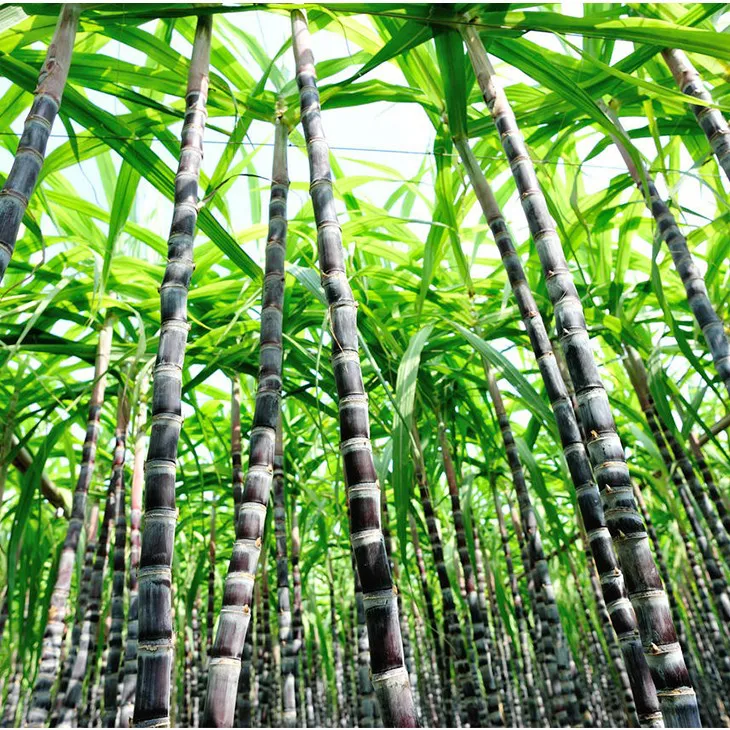- 0086-571-85302990
- sales@greenskybio.com
Sugarcane Extracts: China vs. the United States
2024-11-27

1. Introduction
Cane extracts play a significant role in various industries, including food, beverage, and pharmaceuticals. China and the United States are two major players in the production and utilization of cane extracts. This article aims to explore the differences and similarities between Chinese and American cane extracts in terms of farming methods, extraction techniques, market trends, research efforts, and future development potential.

2. Farming Methods
2.1 China
In China, sugarcane is mainly grown in tropical and subtropical regions such as Guangxi, Yunnan, and Guangdong. Traditional farming methods are still widely used, but modern agricultural techniques are gradually being introduced.
- Soil preparation: Farmers usually plow the land deeply to loosen the soil, which is beneficial for sugarcane root growth.
- Planting: Sugarcane is often planted by cuttings. The cuttings are carefully selected and planted at an appropriate spacing.
- Fertilization: A combination of organic and inorganic fertilizers is used. Organic fertilizers, such as manure, help improve soil fertility, while inorganic fertilizers provide essential nutrients like nitrogen, phosphorus, and potassium.
- Irrigation: In regions with insufficient rainfall, irrigation systems are set up to ensure that sugarcane gets enough water. Drip irrigation is increasingly popular as it can save water and improve irrigation efficiency.
2.2 United States
In the United States, sugarcane is mainly cultivated in Florida, Louisiana, and Hawaii. Large - scale mechanized farming is a prominent feature.
- Land management: The use of large machinery for land leveling and preparation is common. This enables more efficient planting and harvesting operations.
- Planting techniques: High - tech planting machines are used to plant sugarcane cuttings precisely at a uniform depth and spacing.
- Fertilization and pest control: Precision agriculture techniques are applied. Sensors are used to detect soil nutrient levels and pest infestations, allowing for targeted fertilization and pest control measures.
- Irrigation: Center - pivot irrigation systems are widely used in large - scale sugarcane fields, which can cover a large area and ensure uniform water distribution.

3. Extraction Techniques
3.1 China
China has a long - standing tradition in Sugarcane Extraction.
- Traditional milling: In some small - scale production areas, traditional stone mills are still used to crush sugarcane to extract juice. However, this method has relatively low efficiency.
- Modern extraction plants: In large - scale production, modern multi - roller mills are employed. These mills can extract a large amount of juice from sugarcane more efficiently.
- Juice clarification: Various methods such as sedimentation, filtration, and the use of flocculants are utilized to clarify the extracted juice, removing impurities and improving the quality of the final product.
- Evaporation and crystallization: After clarification, the juice is evaporated to concentrate the sugar content, and then crystallization is induced to obtain sugar crystals.
3.2 United States
The United States also has advanced extraction techniques.
- High - pressure extraction: Some extraction facilities use high - pressure techniques to extract juice from sugarcane. This method can increase the extraction rate and improve the quality of the juice.
- Enzyme - assisted extraction: Enzymes are sometimes used to break down the cell walls of sugarcane more effectively, facilitating the extraction of juice and other valuable components.
- Advanced purification processes: In addition to traditional clarification methods, the United States often employs more advanced purification technologies, such as membrane filtration, to further remove impurities and contaminants from the juice.
- Continuous evaporation and crystallization systems: These systems are designed for high - volume production, enabling efficient and continuous production of sugar crystals.

4. Market Trends
4.1 China
Increasing domestic demand is a significant trend in the Chinese market for cane extracts.
- The food and beverage industry in China is growing rapidly, and cane sugar is widely used in various products such as candies, beverages, and baked goods. As a result, the demand for high - quality cane extracts is on the rise.
- There is also a growing trend towards natural and healthy products. Cane extracts, which are considered natural sweeteners compared to artificial sweeteners, are becoming more popular among consumers.
- China is also increasing its exports of cane - based products. The country's sugarcane products are gradually gaining a foothold in the international market, especially in Asian and African markets.
4.2 United States
In the United States, market trends are influenced by both domestic and international factors.
- Domestically, the demand for alternative sweeteners is increasing. While cane sugar is still a major sweetener, there is a growing interest in low - calorie and natural sweeteners. Cane extracts are being explored for their potential in this area.
- Internationally, the United States is a major exporter of agricultural products. Cane - based products are part of its export portfolio, and the market trends are affected by global trade policies and competition from other sugar - producing countries.
- The biofuel industry in the United States also has an impact on the cane extract market. Some sugarcane - based products can be used as raw materials for biofuel production, which affects the supply and demand balance in the market.

5. Research Efforts
5.1 China
China is investing a great deal in research related to cane extracts.
- Breeding research: Scientists are working on breeding new sugarcane varieties with higher yields, better resistance to diseases and pests, and improved sugar content. This research aims to enhance the overall competitiveness of China's sugarcane industry.
- Extraction technology innovation: Research is being carried out to develop more efficient and environmentally friendly extraction techniques. For example, the exploration of new enzyme - based extraction methods and the improvement of existing evaporation and crystallization processes.
- Value - added product development: Efforts are made to develop high - value - added products from cane extracts. This includes the development of functional cane sugars with added health benefits, such as prebiotic properties.
5.2 United States
The United States also has extensive research in the field of cane extracts.
- Genetic engineering research: Scientists are exploring the use of genetic engineering techniques to modify sugarcane plants. The goals include increasing sugar production, enhancing resistance to environmental stresses, and improving the quality of cane extracts.
- Advanced extraction and purification research: Research is focused on developing more advanced extraction and purification technologies to produce higher - quality cane extracts with fewer impurities. This involves the study of new membrane materials and separation techniques.
- Bio - based product research: Given the potential of sugarcane in the biofuel and bioproducts sectors, the United States is conducting research on converting cane extracts into bio - based plastics, chemicals, and other high - value products.
6. Future Development Potential
6.1 China
China has significant potential for future development in the cane extract industry.
- Expansion of cultivation areas: There is still room for expanding sugarcane cultivation in some under - developed regions in southern China. This can increase the raw material supply for cane extracts.
- Upgrading of extraction technology: With continuous technological innovation, China can further improve its extraction efficiency and product quality, enhancing its competitiveness in the global market.
- Diversification of products: China can develop more diversified cane - based products, not only limited to sugar but also including various functional extracts and bio - products, to meet the diverse needs of the market.
6.2 United States
The United States also has promising prospects for the future development of cane extracts.
- Advancement in genetic engineering: The application of genetic engineering in sugarcane can bring about revolutionary changes in the industry. New genetically modified sugarcane varieties may have higher yields and better quality, which will boost the production of cane extracts.
- Exploration of new markets: The United States can explore new international markets for its cane - based products, especially in emerging economies. This can help to expand its market share and increase the demand for cane extracts.
- Integration with the bio - economy: As the bio - economy develops, the United States can further integrate cane extracts into the bio - based product chain, creating more value - added products and promoting the sustainable development of the industry.
7. Conclusion
In conclusion, both China and the United States have their own characteristics in the field of cane extracts. China has a large domestic market and is constantly making progress in traditional farming and extraction methods while actively promoting research and innovation. The United States, with its advanced technology and strong research capabilities, is also exploring new ways to develop the cane extract industry. Looking forward, both countries have great potential for future development in this area, and there may also be opportunities for cooperation and exchange to jointly promote the development of the global cane extract industry.
FAQ:
What are the main farming methods for sugarcane in China?
In China, sugarcane farming often involves proper field preparation with soil tilling to ensure good drainage and soil aeration. Farmers also pay attention to the selection of suitable varieties for different regions. Irrigation is carefully managed, especially in dry seasons. Additionally, fertilization is a crucial aspect, with a balanced use of nitrogen, phosphorus, and potassium fertilizers to promote healthy growth. Pest and disease control is carried out through integrated pest management methods, which may include the use of biological control agents and pesticides when necessary.
How do the extraction techniques for cane extracts differ between the US and China?
In the US, the extraction techniques may rely more on advanced machinery with high - efficiency crushing and separation systems. These systems are often designed to handle large - scale production. In China, while also using modern machinery, there may be more emphasis on traditional knowledge - based extraction methods in some regions. For example, in certain small - scale or traditional production areas, some unique local extraction techniques might be preserved. Chinese extraction also focuses on maximizing the utilization of all components in sugarcane, not just sucrose extraction but also for other valuable by - products.
What are the current market trends for cane extracts in the US?
In the US, there is a growing trend towards the production of value - added cane extract products. This includes the development of health - related products such as natural sweeteners with added nutritional benefits. There is also an increasing demand for organic cane extracts in the market. The use of cane extracts in the food and beverage industry is expanding, especially in the production of specialty drinks and high - end confectionery products. Additionally, the US market is seeing more research and development efforts to improve the quality and stability of cane extract products.
What are the potential areas for future development of cane extracts in China?
In China, one potential area for future development is in the field of bio - energy. Cane extracts can be further explored for the production of bio - fuels. There is also potential in the development of functional cane extract products for the health and wellness market. China could focus on improving the quality and safety standards of cane extracts to meet international export requirements. Moreover, with the growth of the domestic consumer market, there is an opportunity to develop more diverse and innovative cane - based products for the local consumers.
How do research efforts in cane extracts compare between China and the US?
In the US, research efforts in cane extracts are often focused on improving the efficiency of production processes, such as developing new extraction technologies to increase yields and reduce costs. There is also significant research on the genetic modification of sugarcane to enhance its resistance to pests and diseases. In China, research is not only on production - related aspects but also on the exploration of the nutritional and medicinal values of cane extracts. Chinese research aims to develop more comprehensive utilization methods of cane extracts, from traditional medicine applications to modern food and health product development.
Related literature
- Sugarcane Farming and Extract Production in the United States"
- "The Characteristics and Potential of Chinese Cane Extracts"
- "Comparative Study of Cane Extracts: China and the US Markets"
- ▶ Hesperidin
- ▶ Citrus Bioflavonoids
- ▶ Plant Extract
- ▶ lycopene
- ▶ Diosmin
- ▶ Grape seed extract
- ▶ Sea buckthorn Juice Powder
- ▶ Fruit Juice Powder
- ▶ Hops Extract
- ▶ Artichoke Extract
- ▶ Mushroom extract
- ▶ Astaxanthin
- ▶ Green Tea Extract
- ▶ Curcumin
- ▶ Horse Chestnut Extract
- ▶ Other Product
- ▶ Boswellia Serrata Extract
- ▶ Resveratrol
- ▶ Marigold Extract
- ▶ Grape Leaf Extract
- ▶ New Product
- ▶ Aminolevulinic acid
- ▶ Cranberry Extract
- ▶ Red Yeast Rice
- ▶ Red Wine Extract
-
Pomegranate Extract
2024-11-27
-
Senna Leaf Extract
2024-11-27
-
Clove Powder
2024-11-27
-
Tamarind extract powder
2024-11-27
-
Sophora Japonica Flower Extract
2024-11-27
-
Mangosteen extract powder
2024-11-27
-
Bitter Melon Extract
2024-11-27
-
Cat Claw Extract
2024-11-27
-
melatonin extract
2024-11-27
-
Wheat Germ Extract
2024-11-27





















